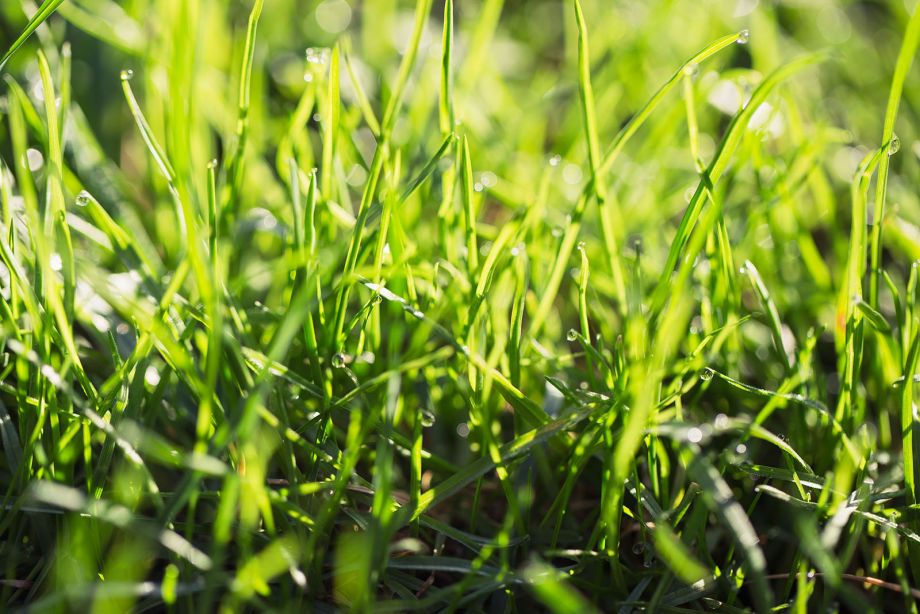
Too Much Lime On Lawn? (Here’s What To Do)
Ever wondered what happens when you get a little too generous with lime on your lawn?
We’ve all been there, trying to perfect our green spaces. But sometimes, in our eagerness to nurture our grass, we might overdo it with the lime.
Don’t worry, though! This guide is for you.
In this guide, I’ll explain what happens if you use too much lime on lawns, the signs to look out for, and how to fix an over-limed lawn.
How Much Lime Is Too Much For Lawn?
That depends on the starting pH level of your soil.
Most grasses do best when the soil pH is between 6.0 and 7.0, and if the pH goes beyond that, you’ve added too much lime.
Also Read: Does Crossbow Kill Clover?
Generally speaking, if you’re putting more than 50 pounds of lime on every 1,000 square feet of lawn in one go, that’s probably too much.
Overdoing it like that can be a bit of a shock to your lawn and cause some issues.
What Happens When You Over-Lime?

Putting too much lime on lawns can cause a bunch of problems.
It can push the soil pH above 7.5, making it too alkaline, and when that happens, your grass can’t easily get some important nutrients like iron, manganese, copper, and zinc.
This can lead to your grass turning yellow and not growing as well as it should.
But that’s not all. The helpful little microorganisms in your soil start to slow down, which means organic matter doesn’t break down as quickly. Your soil structure can get worse over time.
Oh, and you might start seeing more weeds popping up too.
All of this can really take a toll on your lawn, making it weaker and not looking its best.
Signs Of Too Much Lime On Lawn
Want to know if you’ve gone overboard with the lime? Here are some things to look out for:
- Your grass might have yellow patches or just look yellow all over
- The grass isn’t growing as fast or as tall as it usually does
- You’re seeing more weeds, especially types like sedges and spurges
If you’re noticing these things, there’s a good chance you’ve put too much lime on your lawn.
Also Read: Peat moss over grass
How To Fix An Over-Limed Lawn
Don’t stress if you think you’ve over-limed your lawn. There are ways to fix it.
Here’s what you can do:
#1 Get A Soil Test
First things first, we need to figure out exactly what’s going on with your soil. Do a soil test.
Why? Because guessing can lead to more problems, and we want to avoid that.
You can pick up a DIY soil test kit from a garden center if you’re feeling up to it or consider a more professional local soil testing company.
But for the most accurate results, consider sending a sample to a professional lab or your local agricultural extension office. They’ll provide you with a detailed report showing your soil’s pH level and nutrient content.
If you’ve overdone it with the lime, you’ll likely see a pH above 7.0.
#2 Add Organic Matter
Now it’s time to balance things out with some organic matter.
This stuff is great for your soil – it helps bring the pH down gradually and improves overall soil health. You can use compost, well-rotted manure, peat moss, or leaf mold – they’re all great.
Spread it over your lawn about half an inch thick. If you can work it into the top few inches of soil, that’s great! If not, don’t worry – it’ll mix in naturally over time.
This organic goodness will help your soil retain water better and make nutrients more available to your grass.
#3 Apply Sulfur

If your pH is super high, you might need to use sulfur.
It’s very effective at lowering pH, but you need to be careful with it.
You can use elemental sulfur or aluminum sulfate, but many people prefer elemental sulfur because it works more slowly and gently.
Typically, you’ll need about 1-2 pounds for every 100 square feet, but don’t just guess at it. Check your soil test results and follow the package instructions carefully.
If you’re unsure, it’s worth talking to a lawn care professional before applying sulfur.
Also Read: Is GrubEx Safe For Pets
#4 Wait A Few Weeks
Now comes the hardest part – waiting. I know you want your lawn fixed quickly, but your grass needs time to adjust to all these changes.
While you’re waiting, keep an eye on your lawn’s health. Water it deeply but less frequently – this encourages your grass to grow deep roots, which is exactly what you want.
If possible, try to minimize foot traffic on the lawn for a while too..
Give it at least 3-4 weeks before you start evaluating the results. Sometimes, it might even take a full growing season to see real improvements.
#5 Avoid Adding Too Much Lime Again
Ok, now that we’ve sorted out this mess, let’s make sure it doesn’t happen again.
- Always base lime application on soil test results
- Apply lime in smaller, split applications rather than all at once
- Mark your calendar for regular soil tests (every 1-2 years)
- Keep good records of when and how much lime you’ve applied
Wrapping Up
Dealing with too much lime on your lawn might seem daunting, but it’s a fixable problem.
Follow the steps I outlined and your lawn should recover.
And while your lawn recovers, adjust your care routine and give it time to bounce back.
Most importantly, learn from this experience – always base future lime applications on soil test results and apply in smaller, controlled amounts.
FAQs
How Fast Does Lime Kill Grass?
Lime does not kill grass directly. Instead, it raises the soil’s pH which can make it harder for some types of grass to grow.
This might cause the grass to grow more slowly, turn yellow, or even die. But this process is slow and can take weeks or months to see any changes.
Will Lime Kill Ticks?
No, lime won’t kill ticks. Even though lime changes the pH level of the soil and might affect the environment where ticks live, it isn’t toxic to them.








